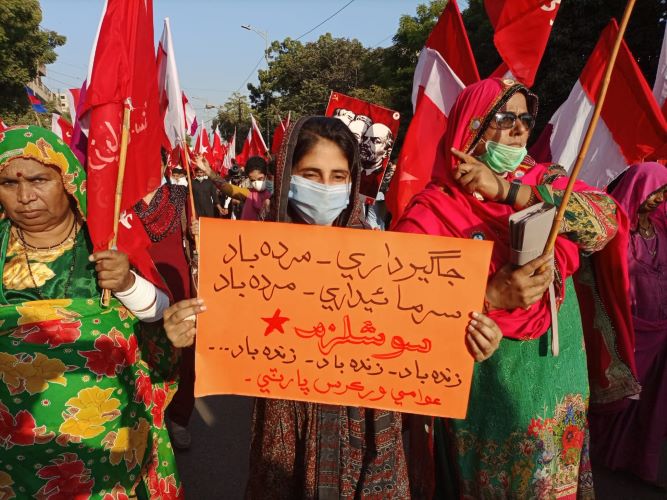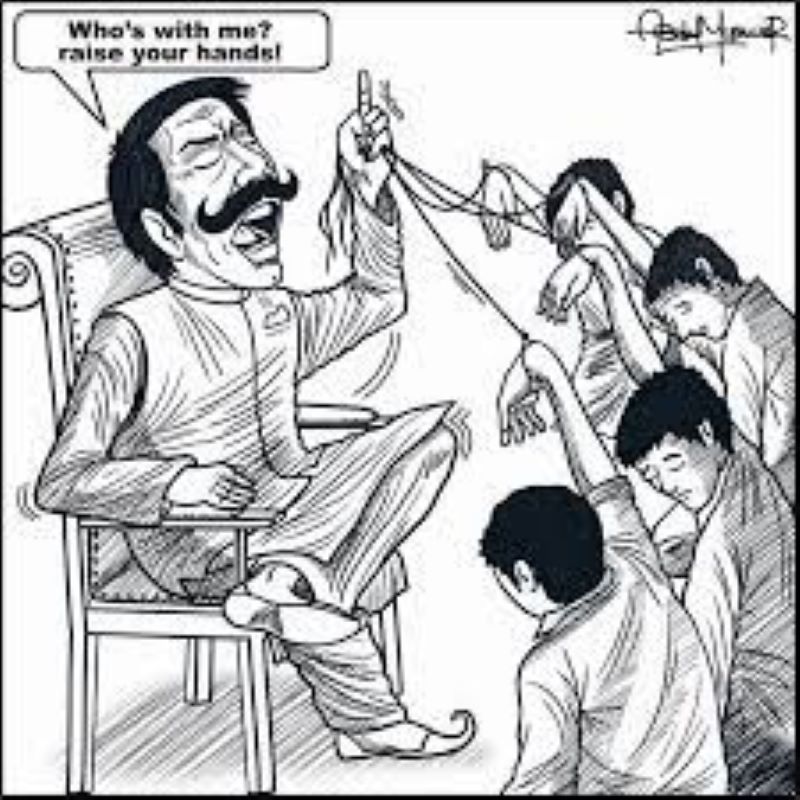
There was a time when both religious and feudal lords were within ethical boundaries, but these days both have proved to be the ‘Cobra Snakes’ and ‘Black Scorpions’
Prof Dr. Abdullah G Arijo
In Khairpur Sindh, the “Fatima case” caused widespread outrage after a shocking incident. A young girl named Fatima was found assaulted by a group involving multiple peers and their devout followers. The quiet community was shell-shocked, struggling to comprehend the transgression committed by individuals who were previously seen as leaders. This tragic incident led to a surge of local activism, demanding justice for Fatima and bringing the offenders into the limelight. As Fatima’s story began to draw national attention, it highlighted the urgency for accountability, reform, and education in such closed-off communities. Despite the horrific circumstances, Fatima’s case solidified a vow made by Khairpur’s inhabitants: to ensure their town never again becomes a stage for such heinous acts.
 Religion in Sindh is closely tied to its spiritual leaders, called ‘Pirs’. These leaders are highly respected and revered by their innocent followers, but they deserve otherwise. These Pirs, by illiterate people, are considered direct intercessors with vital force and there they preach that their guidance is paramount to their disciples. Their dargahs (shrines) are mainly money bags and crucial collection spots, offering a blend of so-called Sufism that underlines the religious fabric of Sindh which otherwise is a big lie.
Religion in Sindh is closely tied to its spiritual leaders, called ‘Pirs’. These leaders are highly respected and revered by their innocent followers, but they deserve otherwise. These Pirs, by illiterate people, are considered direct intercessors with vital force and there they preach that their guidance is paramount to their disciples. Their dargahs (shrines) are mainly money bags and crucial collection spots, offering a blend of so-called Sufism that underlines the religious fabric of Sindh which otherwise is a big lie.
Apart from ‘guiding’ their followers towards so-called spiritual growth and enlightenment, Pirs also play a crucial role in reverse socialization and in the socio-political dynamics of Sindh. They exercise considerable influence over their community, and their endorsements often shape local political atmospheres purely based on ill preach of religious ideas. Therefore, in Sindh, the religious factor isn’t limited to mere individual beliefs and practices; rather, it extends to a broader societal and political level, shaped and steered by Pirs and their followers.
The shrines are mainly money bags and collection spots, offering a blend of so-called Sufism that underlines the religious fabric of Sindh which otherwise is a big lie
Some of the feudal lords of Sindh in past held significant roles in shaping the region’s societal structure during their reign. Known for their immense power and influence, they contributed to self-suited social development in numerous ways. The Sindhi society was highly agrarian, with the lords owning vast tracts of land and employing the local populace to cultivate. Despite the social disparities, the lords initiated several reforms to improve living conditions. They were patrons of education, culture, and arts, promoting literacy and intellectual growth among their subjects. Moreover, they played an essential role in modelling social ethics, thereby setting a standard for law and order within their dominion. Serfs and peasants were safeguarded under their rule, fostering a sense of collective identity and structured grading, but this did not bring a dynamic change in the society.
Also read: Pakistan’s Modern Feudal Lords
Throughout their rule, Sindh’s feudal lords of the past played pivotal roles in shaping the social structure of the region, but the legacy has gone very wrong when it comes to social justice. The societal system of Sindh was primarily agricultural-related, where poor masses needed the support of feudal lords, with these lords owning expansive lands and employing locals for farming. Despite prevalent social inequalities, they implemented numerous reforms to enhance living standards, in turn, the feudal lords with mollified intentions exploited their basic rights. These lords were benefactors of education, culture, and arts, stimulating literacy and intellectual progress among their subjects. Furthermore, they were crucial in framing social ethics, thus establishing a benchmark for law compliance within their territory. Despite their submissive role, the peasants experienced protection under these lords, and this very innocence was misused.
The inability of authorities to enforce laws against culprits aggravates the situation, reflecting a deep-seated systemic fault in the social structure
The upper Sindh region is mired in a grim societal crisis like child abuse, a blatant manifestation of social injustice. The harsh reality is the institutional neglect and societal apathy prevalent in this region, where children often become victims of physical, psychological, and sexual harm. The inability of authorities to enforce laws against culprits aggravates the situation, reflecting a deep-seated systemic fault in the social structure. The ramifications extend far beyond immediate harm, setting off an inter-generational cycle of abuse. Societal taboos and lack of awareness further deter victims from seeking help. Child abuse in upper Sindh is not just a singular problem, but a manifestation of severe social injustice that requires immediate address and rectification.

In Pakistan’s complex social and economic landscape, emotional exclusion causes marginalization. The privileged classes, landlords, Pirs and their supporters often disregard the struggles of the indigent masses. Their obliviousness creates a silent divide, isolating the poor in a pervasive cycle of emotional suppression, robbing them of their voices. The apathetic attitude of the elites, ensconced in their bubble of privilege, gives rise to a heart-pulling contradiction, the heart of Pakistan beats in its masses, yet their solemn cries for empathy and equality echo unanswered. This emotional blackballing can perpetuate a vicious cycle of disparity and dissolution, tarnishing the essence of unity that defines us as a nation. It’s a compelling call to eliminate this social myopia, recognize the poor masses’ worth, and treat every Pakistani life as valuable.
Also read: The inner tragedies of feudal life
Feudalism discouraged a unified government. Individual lords would divide their lands into smaller and smaller sections to give to lesser rulers and knights. These lesser noblemen in turn would subdivide their own lands into even smaller fiefs to give to even less important nobles and knights.
The lords acquired more wealth and power. In due course and over time, they hated the vassals and did not do any good for them. This created dark clouds in the mental horizon of common men. Secondly, feudalism discouraged nationalism.
There seems no end to these ill attitudes in Sindh. Thanks to social media for surfacing the sin, but eventually all in the veins.
______________
 Prof. (R) Dr. Abdullah G. Arijo is Advisor and Visiting Professor, SBBUVAS, Sakrand, Pakistan. He is Ex-Chairman, Department of Parasitology, Sindh Agriculture University and Ex-Advisor Academics & P&D to Vice Chancellor SAU Tandojam
Prof. (R) Dr. Abdullah G. Arijo is Advisor and Visiting Professor, SBBUVAS, Sakrand, Pakistan. He is Ex-Chairman, Department of Parasitology, Sindh Agriculture University and Ex-Advisor Academics & P&D to Vice Chancellor SAU Tandojam